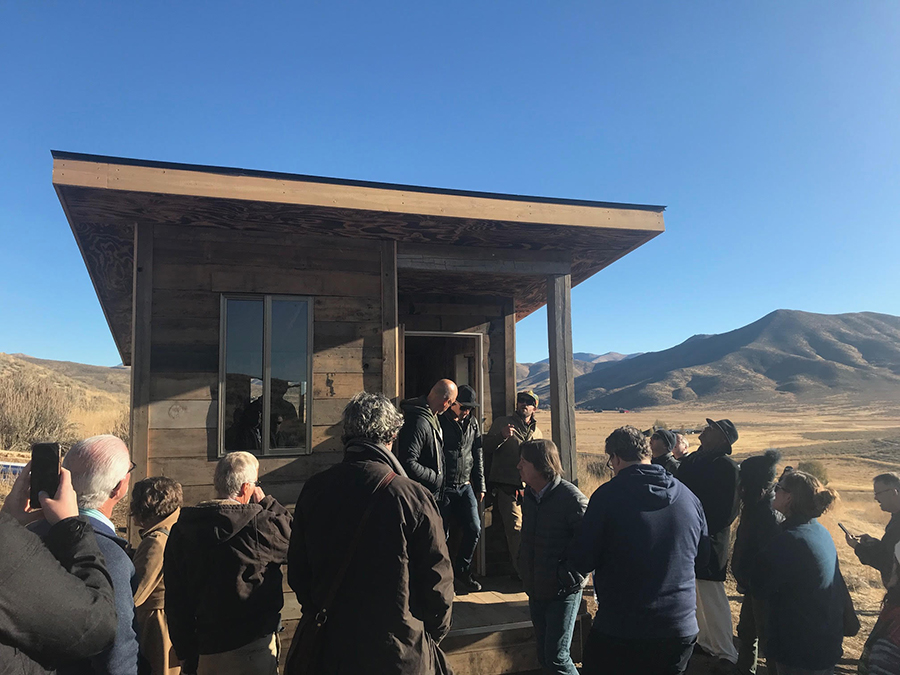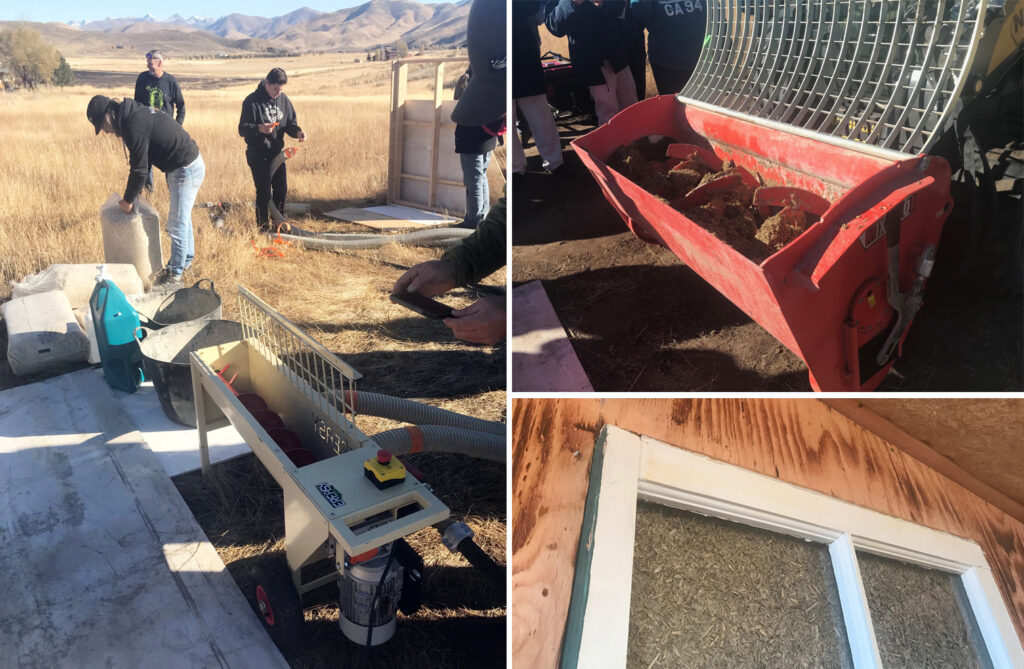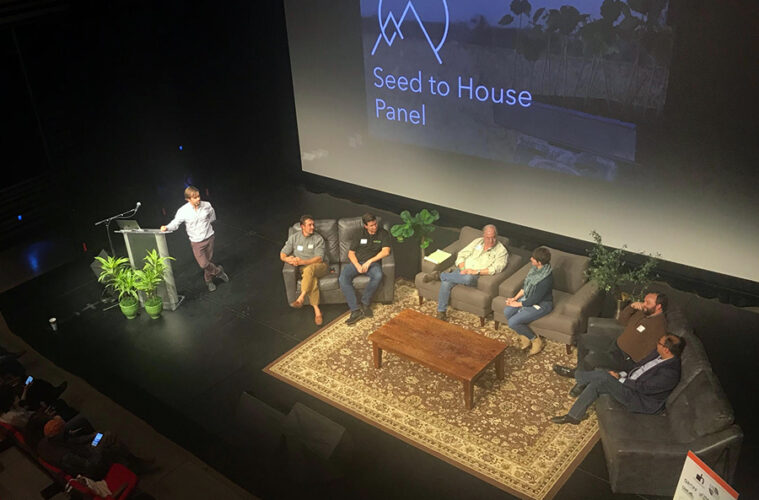Idaho might be a no-go state when it comes to marijuana and a place where it’s still illegal to grow industrial hemp, but that didn’t stop 250 hemp professionals, amateurs and enthusiasts from flooding a tiny Idaho mountain town last month to participate in a historic hemp event.
On October 24 and 25, the first-ever U.S. Hemp Building Summit took place in Sun Valley, Idaho to advance hemp as a building material in America.
Building with hemp and lime is not new, but it is a lost knowledge in the United States that has recently seen the glimmers of a resurgence. Hempcrete, also known as hemplime, is created by combining the inner woody core of the hemp stalk with natural lime and silica. This slurry can be handpicked into form panels, or sprayed into place in more commercial applications. The marriage of these materials creates a non-toxic, permeable wall structure that can replace drywall, insulation, and sheathing. Hempcrete advocates tout that the material is mold-resistant, pest-resistant, and fire-resistant and that it works well as insulation. Although more hands-on hemp building workshops continue to pop up across the nation, this summit was the first event of its kind to be held on American shores.

Matthew Mead, the owner of Hempitecture and founder of the Hemp Building Summit, showed off his take on a hemp tiny home in the foothills of Ketchum, Idaho.
Day one of the summit took place at the Argyos Performing Arts Center in downtown Ketchum, Idaho. Steve Allin, author, teacher, and founder of the International Hemp Building Association ended the first day with an emotional rollercoaster of a presentation titled, “It’s Time to Get Serious.” Allin presented sobering statistics about climate change and how humanity cannot waste any time in tackling the problem. The world is going down in fire or flood, he said. He alternated between candor and humor and reminded the conference-goers: If your hempcrete home is engulfed in flames, you won’t survive — but your house and your stuff will.
We have to reexamine not just the way we build but also what we bring into our homes and how we live in them.
In another presentation, Alison Mears and Jonsara Ruth of the Healthy Materials Lab at The New School presented the data to back up what many of us suspected all along: Plastic houses and toxic materials are making us sick. We have to reexamine not just the way we build but also what we bring into our homes and how we live in them.
The conference didn’t only concern hemp when it came to materials for sustainable building. Sunflowers, rice husks, and sorghum board are just a few of the options to consider when building a natural home, said Chris Magwood, a writer, builder, consultant, and researcher who presented at the summit. The proposal to replace hemp hurd with sunflower stalks proved controversial and was challenged the rest of the day by panelists and attendees. But, with a gentle demeanor and illuminated smile, Magwood also addressed the need for diversity of gender, age, and race on building crews and encouraged builders to cut their waste generation down significantly on build sites.
Other international speakers and panelists included Alex Sparrow, a writer and a builder of UK Hempcrete; Liam Donohoe, a researcher and carbon consultant of the Dublin Institute of Technology; and Sergiy Kovalenkov, the founder of Kiev-based Hempire.

Conference-goers watch the French hempcrete company Ereasy demonstrate how to make a hempcrete house.
On the second day of the event, attendees were bussed to multiple hempcrete buildings around the area. The first stop on the tour was Blake Eagle’s large family home which blended in seamlessly in its suburban environment. Next was a tiny home in the Sun Valley foothills featuring a precast panelized wall system by local hempcrete builders, Hempitecture. At this location, participants also watched an industrial hempcrete sprayer in action. The system was brought over by Damien Baumer, with the French hemp company Ereasy. The last stop of the tour was Idaho Base Camp, an outdoor education center and home to a large hemp-built event space and a tiny home.
The summit ended Friday night with a celebratory dinner at the Limelight Hotel. The summit marked the formal launch of the U.S. Hemp Building Association. Their mission is to accelerate hemp building adoption in the U.S. by offering networking and support to its members. The organization gained over sixty-five new members at the event.


